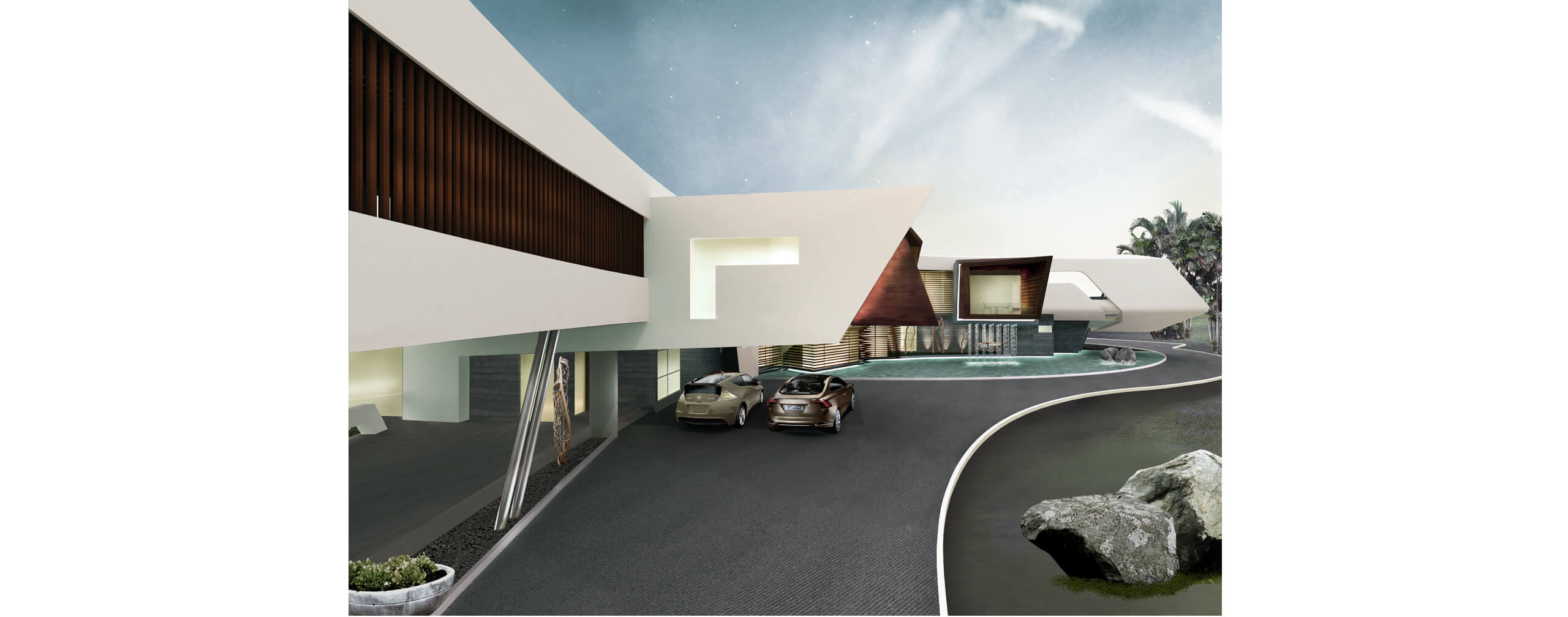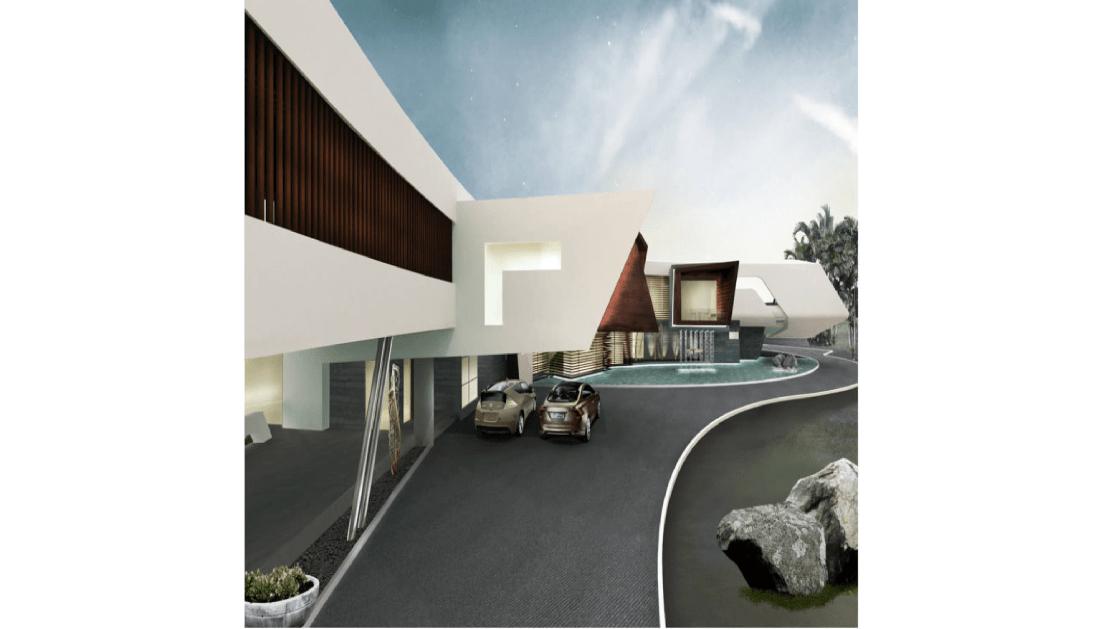16 Dec Lalita Tharani


Radical Innovation shaped most of the foundational works of the studio and defined the practice in the formative years.
‘Going beyond brief’- If I could use one phrase that portrays the early phase of the practice and how I looked at architecture. Early projects have been struggles, to break out programmatic hegemony that comes with most of the early projects, a young architectural practice attracts as commissions.

Temporary Architecture, served as an ideal platform, where I could test the boundaries, take chances with the programmatic agenda, and morph the production of architecture into pure spatial speculations. These ideas, in turn, are borrowed, scavenged in real time projects subsequently.

Early in the practice, I and my partner knew the importance of design that transcends time- what we call as Design Life Cycle. I also traded the ‘Style’ & ‘Trends’ for relevant architectural expressions.

Radical Innovation shaped most of the foundational works of the studio and defined the practice in the formative years. This approach in the early phase also galvanized into a design thinking that helped the practice to step out of the program, and create architecture that has deeper meaning and goal that went beyond its functional contingencies.
This is also a phase, we as a practice, while consolidating what we are good at, started actively acquiring new tools that would expand our visions and try at more complex commissions.
Design Research and Collaboration: While the first phase of the practice was processing the capabilities and potentials of me and the team around, including my partner; I would characterise that most of those learnings are being put to use in the current phase. This is also a phase, we as a practice, while consolidating what we are good at, started actively acquiring new tools that would expand our visions and try at more complex commissions.

Design research is one area that the firm invests a lot of energy and time on. It has been a worthwhile investment, as it equipped the practice to bring in more than one narrative to the over-all design agenda. The practice got shortlisted in the 2 stage international competition for Indian National War Museum, New Delhi; a project that needed multiple narratives and interpretations, where design research played a central role, apart from a highly innovative museum, inserted in the urban heritage of Lutyne’s Delhi.

The studio started collaborating with Jürgen Mayer of J. Mayer.H Berlin, on selected projects from 2016 onwards. These collaborative efforts mostly have been confined to high profile international competitions so far. In 2017, Collaborative and J.Mayer.H got shortlisted in the 2 stage international competition for the Iconic Tower, at Bonifacio City, Manila Philippines- a project sponsored by Philippine Government. In 2018, the winner of that competition, Henning Larson Architects joined hands with studio, for the Musi River rejuvenation project, sponsored by Telungana government.

Dedicating oneself to good work to propagate the relevance of design and improve the quality of over-all architecture, though a credible path and an irrefutable strategy, has its severe limitations as far as its area of influence and to achieve them on a profound scale
Leadership in Architecture and Design Thinking: Moving forward, this is one area that I find myself and the practice are really pre-occupied with and invest our time on. Dedicating oneself to good work to propagate the relevance of design and improve the quality of over-all architecture, though a credible path and an irrefutable strategy, has its severe limitations as far as its area of influence and to achieve them on a profound scale. Architectural activism and leadership roles play in important part in addressing this gap.

I along with my partner, Mujib and a few friends curate a highly influential policy group called Resilient Kerala. This think tank was formed after the devastation, Kerala had witnessed in 2018, to bring together experts from diverse fields of disaster management, ecology, environmental science, sociology, healthcare, urban design, architecture, anthropology, river management, water specialist, waste management specialists, state bureaucracy and executive branch etc, to strategize the future resilience measures. The group has since them morphed into a source for the government braches to seek out to fill the expertise gap.

A suset of the group, along with me and Mujib, currently formulating the strategies for Kochi Design Week, which the government of Kerala incubates to be part of the eco system of design in Kochi, along with Art Biennale & Design Biennale, to make it as a premier design destination in the country.
Lalita Tharani
DESIGN FIELD
Interior Design and Temporary Spaces
LOCATION
Mumbai, India
STUDIO NAME
Collaborative Architecture
ABOUT
LALITA THARANI is the Co-Founder & Principal Architect of COLLABORATIVE ARCHITECTURE, an internationally renowned, multi-award winning practice based in Mumbai. A gold Medallist, she practiced under prominent firms in the country before setting-up her independent Practice & won the IIID national award for her project in the inception year. The studio is credited with designing some of the most innovative projects in India.
The practice is driven by innovation and ceaseless pursuit of quality in design to create projects, which are highly sensitive, poetic, and contemporary. Every project is an exploration, going beyond the functional brief, creating a symbiosis of people, places, culture, climate, economy and collaborative efforts of related disciplines.
International Awards include OFFICE NEXT 2016-Winner, IES Merit Award 2015, IDA 2015, Architecture Israel- Project of the Year 2012-Winner & Runner up, SEED Award 2012, SBDI (Society of British Interior Designers)2012- Finalist, Restaurant & Bar Design Awards 2012- Finalist, FX Award 2011-Finalist to name a few apart from 30 National Awards . The studio’s work has been featured in The State of Architecture Exhibition and conference 2016 as one of the most significant works of post-independence era in India.
Collaborative Architecture, along with their International collaborator, J.MAYE.H- Berlin, recently got selected as one of the 5 global practices to design an ICONIC Tower in Bonifacio in Manila, Philippines.
Collaborative Architecture was also one of the 7 finalists in the International competition for Indian National War Museum. In 2018 the firm reached the final stage International 2 stage competition for Kennedy Centre- Israeli Lounge, Washington DC, USA


